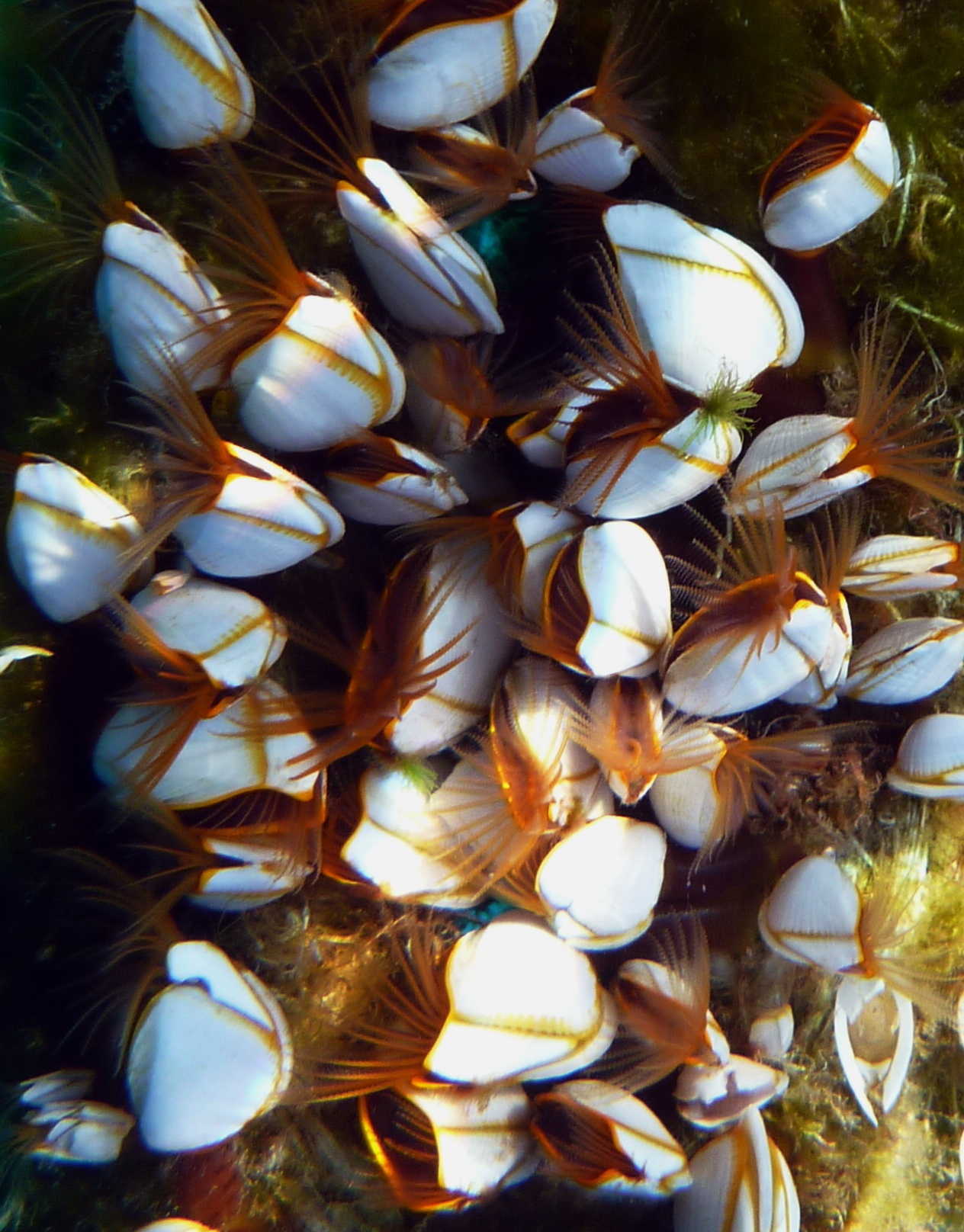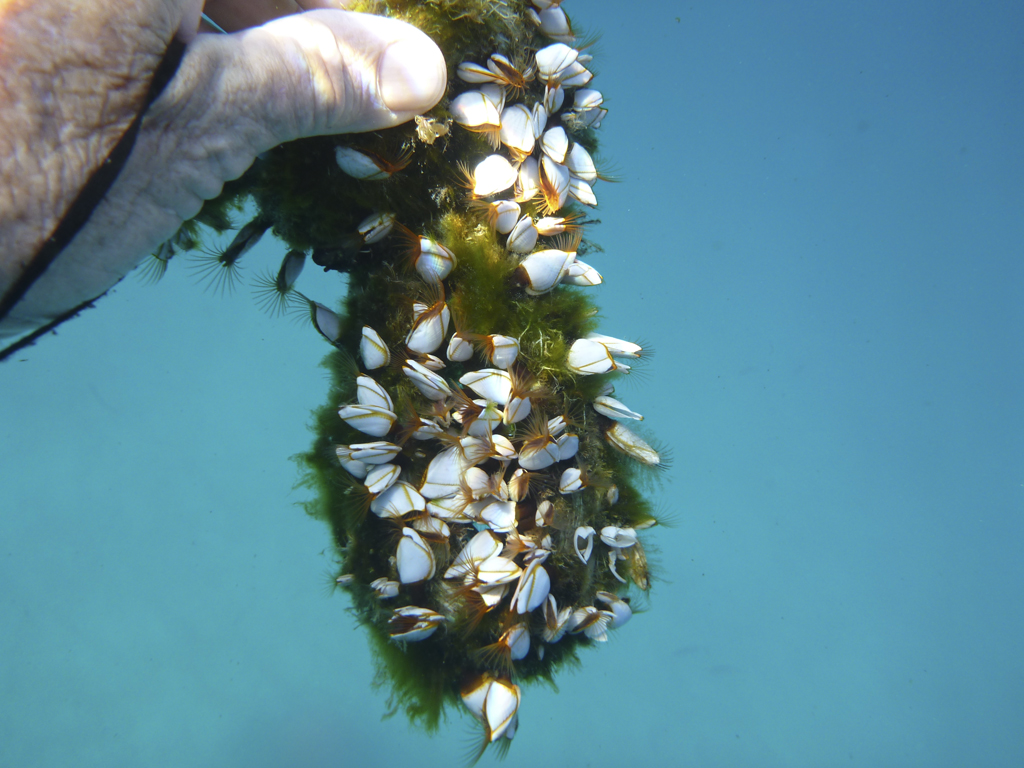Published in the Ocean Watch column, Honolulu Star-Advertiser © Susan Scott
December 17, 2012
TRES MARIETAS, BANDERAS BAY, Mexico » When my husband, Craig, and I sailed Honu to this volcanic island group last week, we found the ocean floor 30 feet below the boat exquisitely visible. This isn’t always the case in these waters, where upwelling currents often cloud the sea with plankton. During my last snorkeling trip off these islands, I could barely see my feet.
 Photo by Susan Scott
Photo by Susan Scott
Gooseneck barnacles have the appearance of eyeballs.
In minutes, Craig and I dropped the anchor, donned mask and fins and jumped in. The sparkling water looked and felt heavenly under the steamy tropical sun, but you pay for such conditions where there are no coral reefs. The fish were far less abundant than they were in the plankton broth of last summer.
The setting sun turned the guano-white islands, swarming with seabirds, pink. So stunning was the scenery, we decided to spend the night anchored off the cliffs, caves and tiny sand beaches of this island national park.
The anchor, however, lay loose among the boulders below. So when a tour boat vacated its mooring ball, I volunteered to stay in the water, catch a line and tie Honu to the secure float.
My lucky call. Tied to the float was a decrepit rope, a loop of which dangled below the waterline. The fraying fibers of the line wouldn’t hold Honu, but they served as home base to a family of gooseneck barnacles.
The busy creatures looked like of a bunch of flirty eyeballs. Atop each individual’s leathery brown neck perched one white, almond-shaped “eye” that batted its long rust-colored lashes in graceful rhythm.

We usually see gooseneck barnacles dead or dying on a beach because the offshore animals attach themselves to the underside of floating marine debris. Watching those barnacles dancing in that clear water was mesmerizing, like viewing a crustacean version of “The Nutcracker.”
Gooseneck barnacles attach to floating objects with rubbery stalks that the animal can stretch or contract. When the barnacle gets in good position current-wise, it opens its jointed, tear-shaped shells and extends a dozen or more feathery appendages that are the creature’s feet. With these the barnacle catches, hauls in and swallows passing animal plankton.
Few sailors like gooseneck barnacles, but Craig and I appreciate the crustaceans’ ability to grab hold of a moving object (they collect on boats at sea), stick there with industrial-strength glue and make babies with their neighbors, all while eating.
“Craig,” I shouted. “There’s a perfect colony of gooseneck barnacles here!”
“Great,” he called back. “Now could you catch the line?”
Oh.
It took some creative rope work, but we managed to tie the boat to the ball without hurting the barnacles.